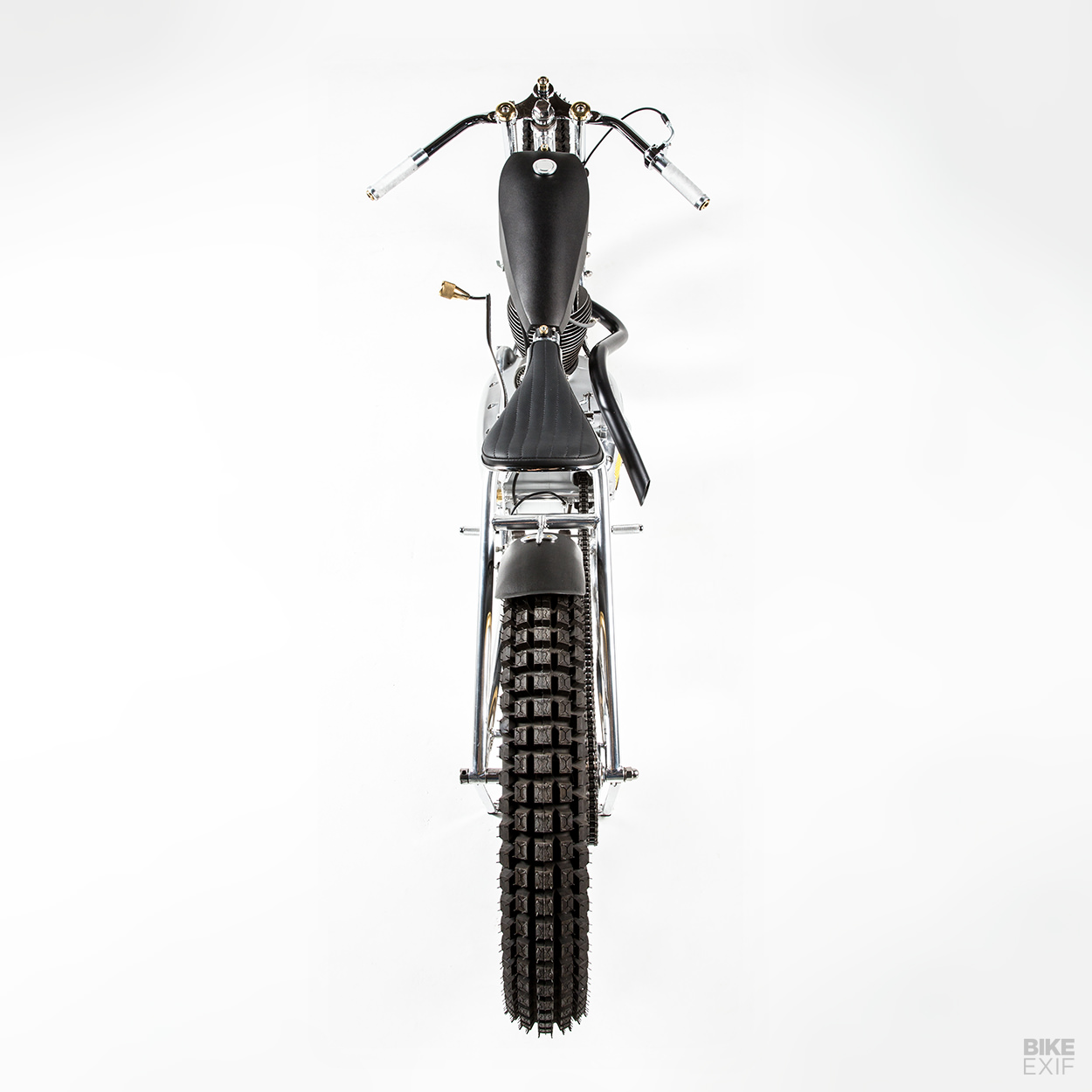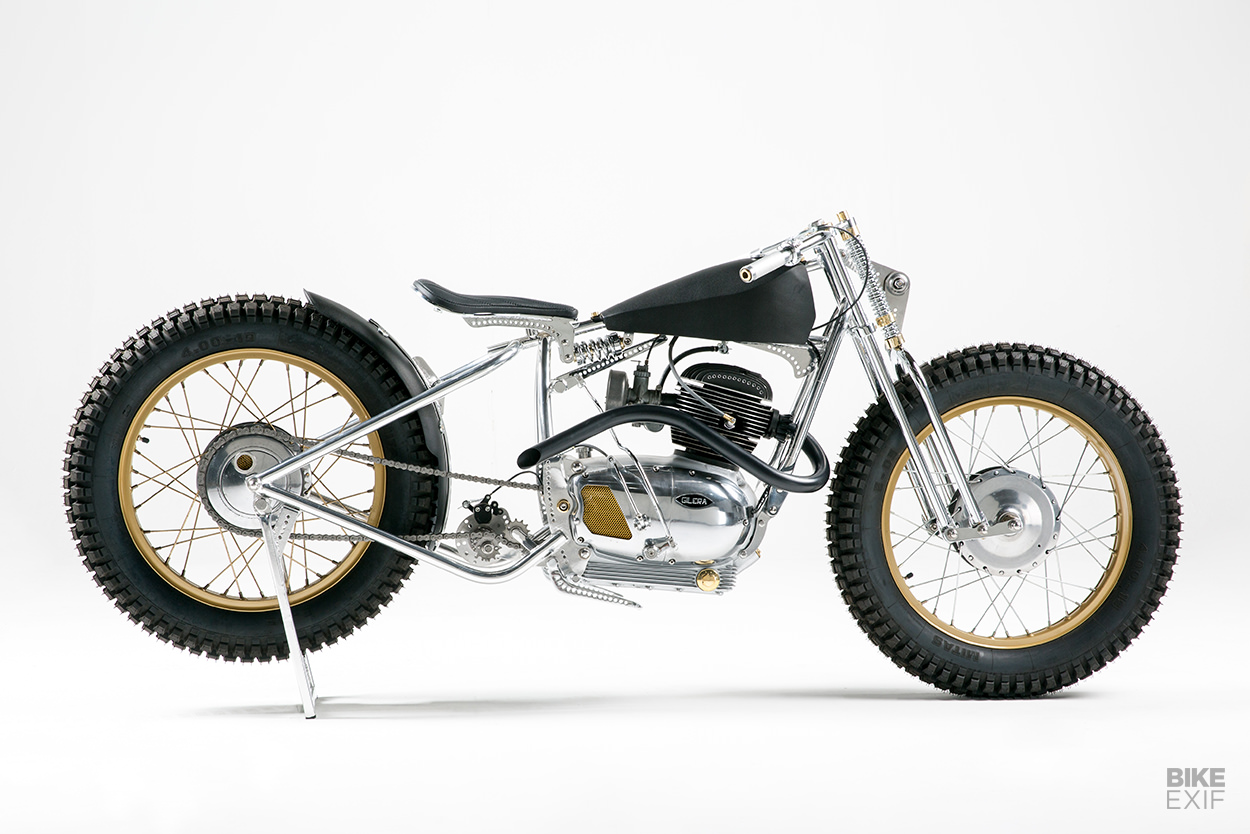
We’re constantly amazed by the skills of some after-hours builders: folks who have full-time jobs, but spend their evenings and weekends crafting bikes to the level you’d expect at a pro workshop.
One of the most talented part-time builders is Edi Buffon, an engineer who lives in Sydney, Australia. We loved his Kawasaki KZ250 from a year ago, but he’s excelled even more with this magnificent Gilera bobber.
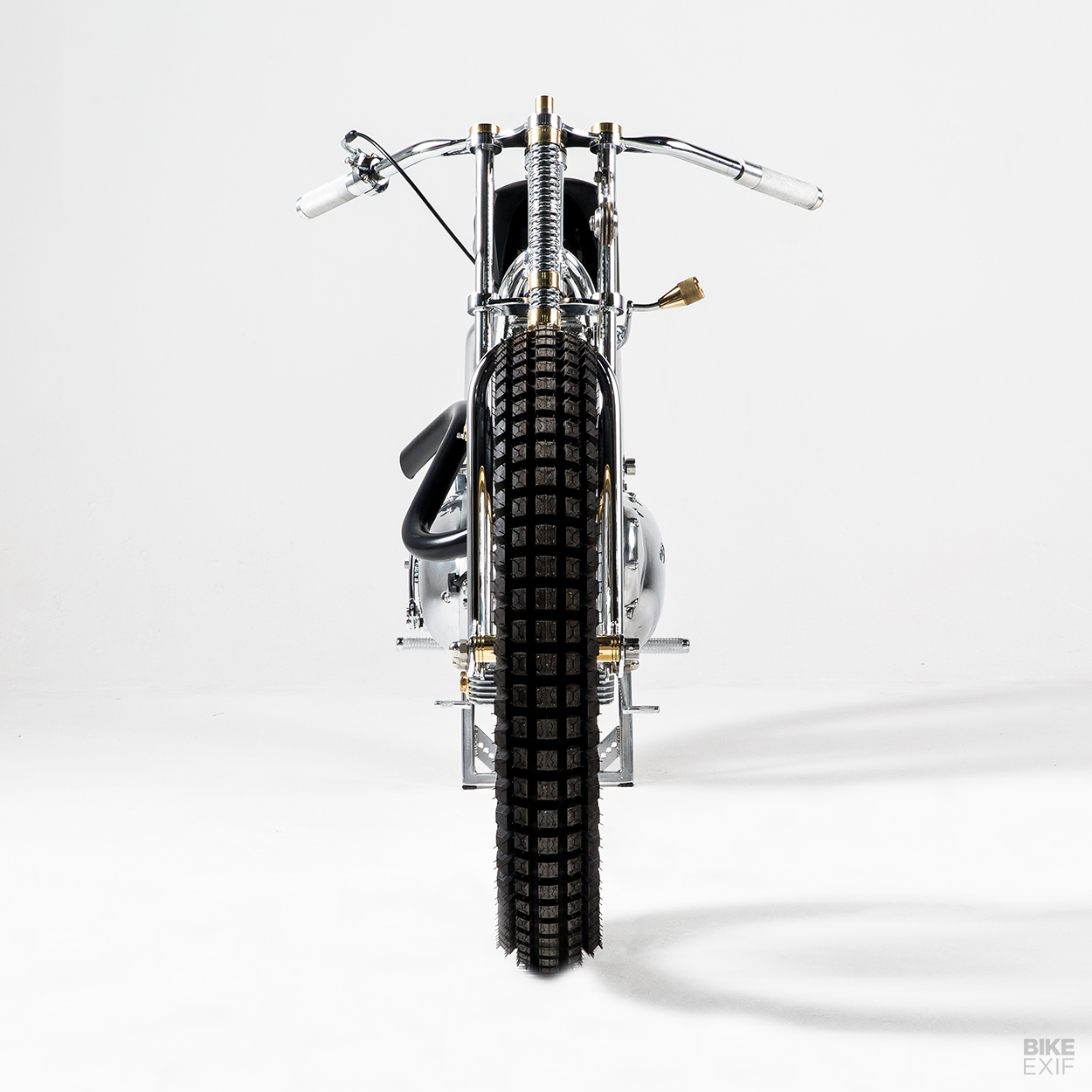
Edi has been riding and modifying motorcycles for 20 years, but it wasn’t until about four years ago that bike building became a serious hobby and he started Machine 1867. “The goal is to turn it into my main source of income,” he says, “but I’m still working on that dream.”
There aren’t many Gileras in Australia—or indeed outside Italy. When this machine was built in 1957, Gilera was riding high on its racing reputation, with multiple World Championship trophies on display at the factory. Its road bikes were pricey compared to many others, and were based on an overhead-valve single—originally 125cc and gradually enlarged to 175cc.
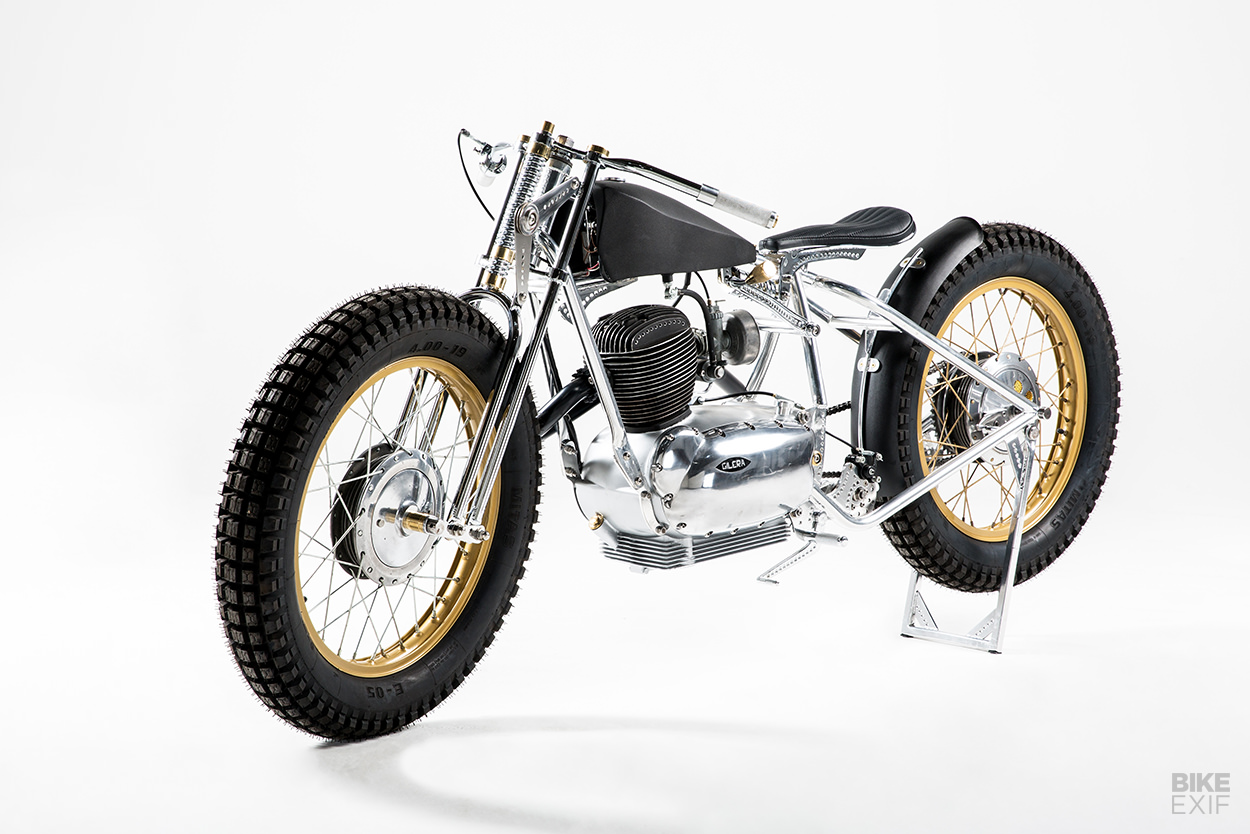
“I was looking for a new project and came across a 1957 Rossa Extra 175 on eBay,” Edi tells us. “One look at the motor and I had to make the purchase!” The seller lived close to Edi, and turned out to have two motors, the wheels and other bits for a really good price.
Edi works solo out of a small shared workshop space. He had no design preconceptions when the tiny Italian arrived on his doorstep, but he does love the style of rigid frames. And he knew he could assemble one functioning motor out of the two from eBay.
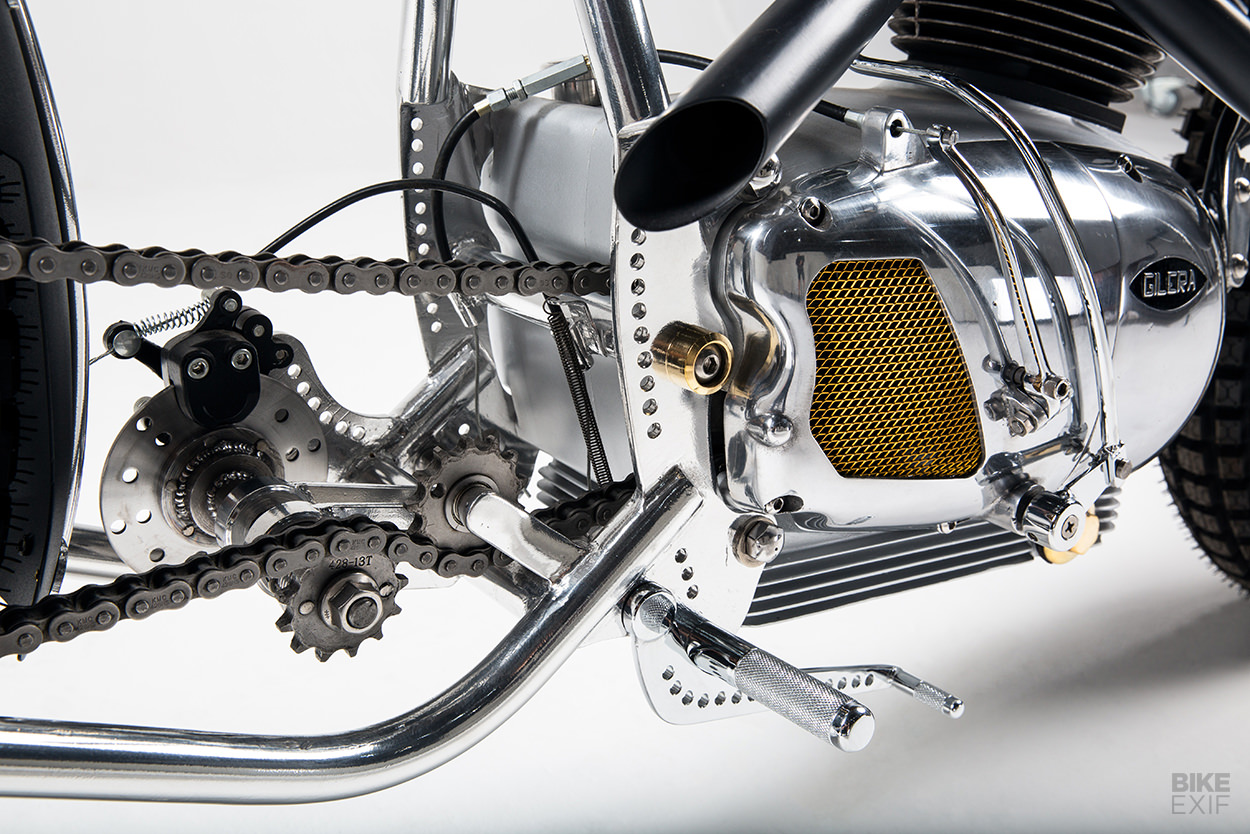
The first job was to source a compatible carburettor from Barcelona, and an electronic ignition from Germany. “The cost for those was more than the two motors and wheels of the original purchase!”
Edi stripped the 19-inch wheels down and sent them away for powder coating in gold. Once relaced, a pair of 4.00-19 Mitas E-05 classic trail tires went on.
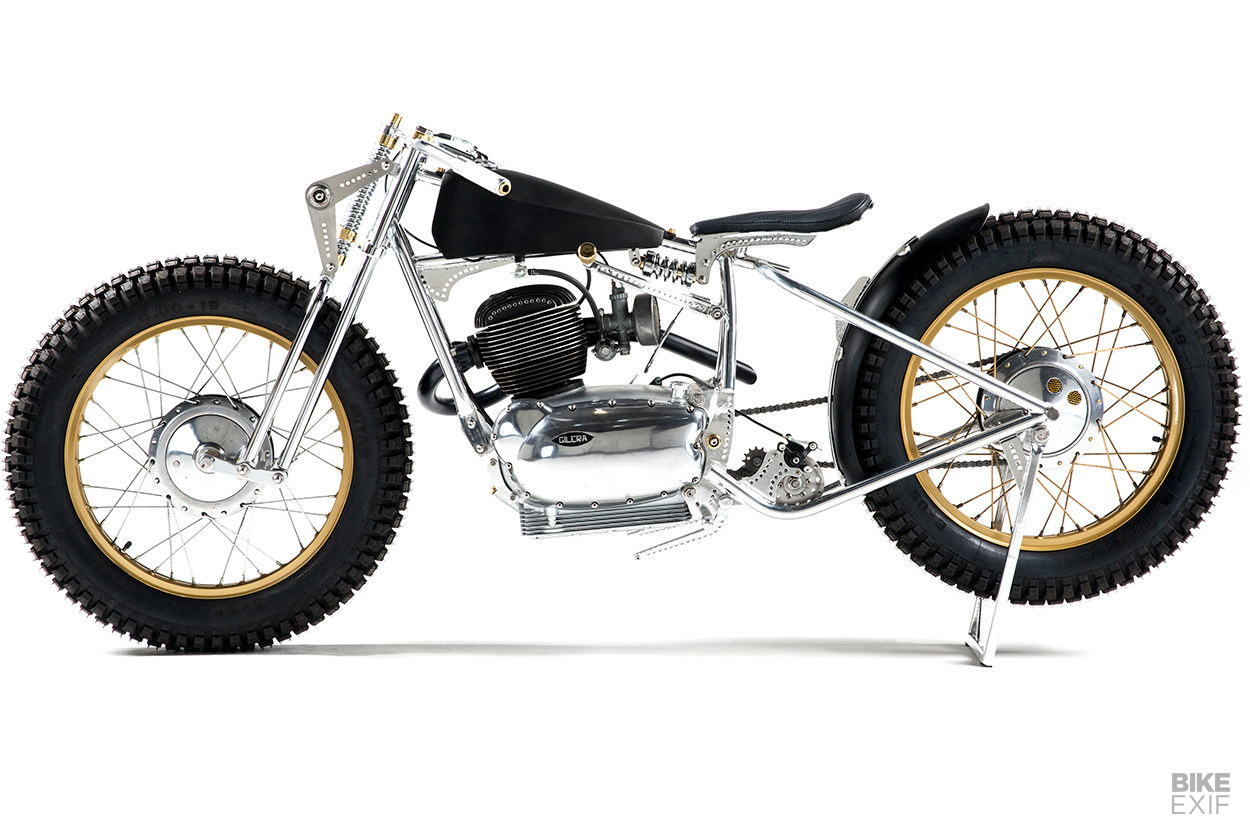
Then he sat the (unfinished) motor and wheels on his bench, measured out a wheelbase that would work, and started building a motorcycle. He made a steering stem, clamped it in his frame jig, and set the rake at 28 degrees.
The frame pipework followed next, fashioned out of cold rolled mild steel. “I liked the way the original frame and motor combination looked, so I fabricated similar motor mounts,” says Edi. “As the framework progressed it started to look like a vintage hill climber, so I let the build follow its own direction.”
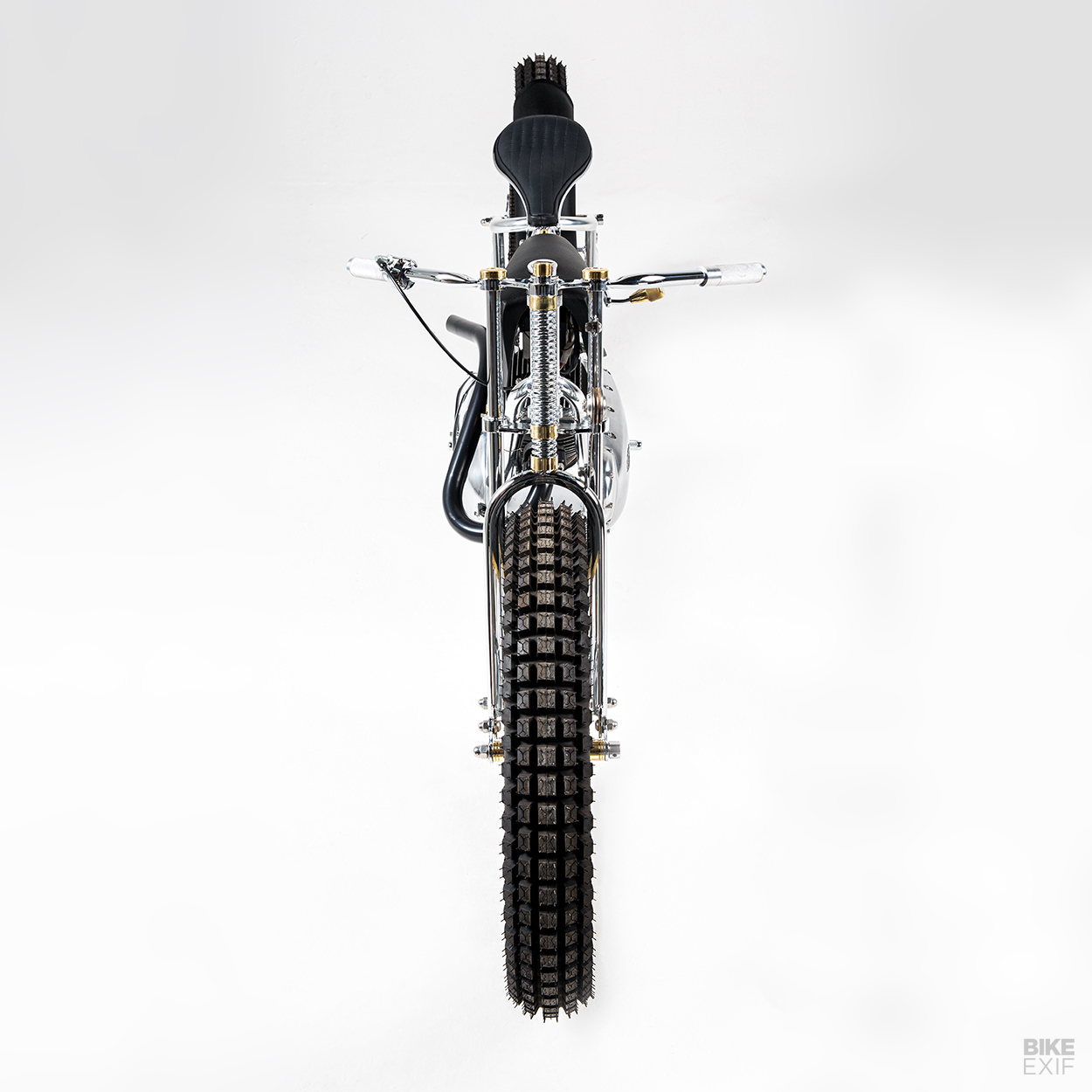
Edi’s gone for a springer front-end setup. “I like vintage/classic style suspension, for the aesthetics, and I like to mix in brass—so all the wheel spacers are brass. The hardest part of the front-end was dialling in the rate. Once I got that right, it was obvious that a damper was needed. So I made a vintage friction type from some stainless and, it works a treat.”
The bars and top and bottom yokes are made from mild steel too, including the top locking nut—which Edi made by cutting and grinding round stock into a hex.
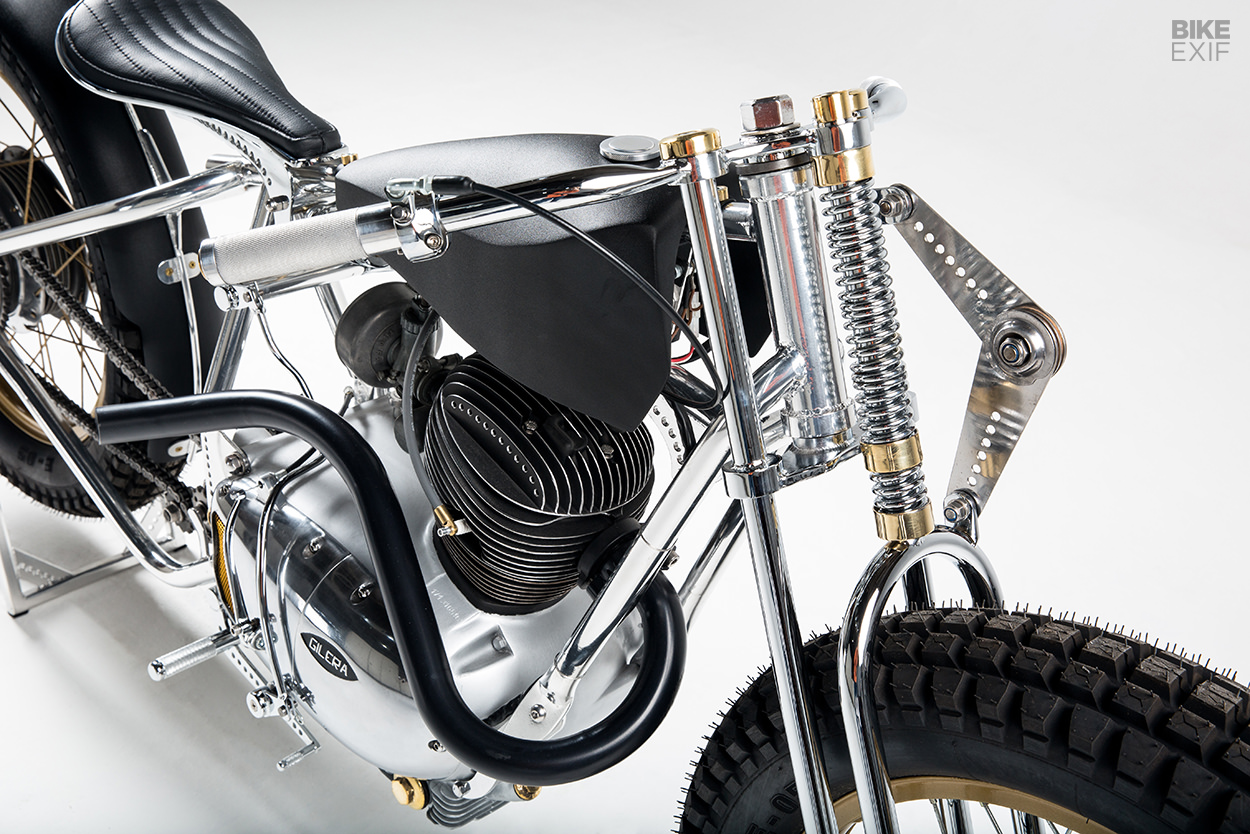
Once the frame was complete and he had a roller, he began work on the tank and fender, this time using 1.2mm mild steel. The tank is simple and a far cry from the bulbous 1950s style original. Both tank and fender are powder coated in a black textured finish, and the seat is sprung with a simple pivot design—then chromed and upholstered.
Edi decided on a foot clutch/hand shift for the Gilera. “A simple process—I made some foot pegs for the clutch and brake, then hand bent some steel for the linkage and shifter to follow the lines of the frame,” he says.
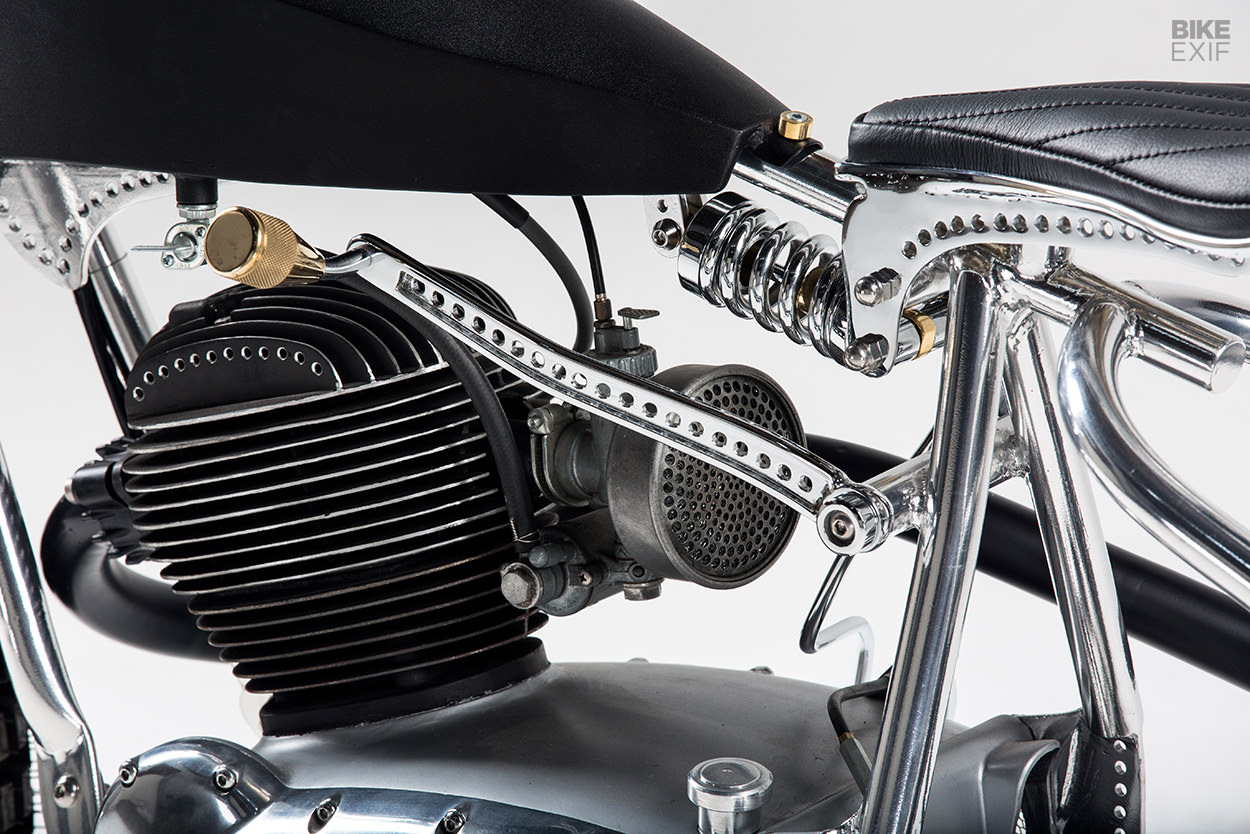
For the back brake, Edi’s built a jackshaft setup running off the primary drive—which he acknowledges is “for aesthetics, and not for function/stopping efficiency. I kept it simple and used cable actuation to match the clutch.”
The exhaust is literally made from scraps that Edi had lying around, but you’d be hard pressed to tell. After several hours of linishing to remove all visible welds, it was powder coated in ceramic black and looks pristine.
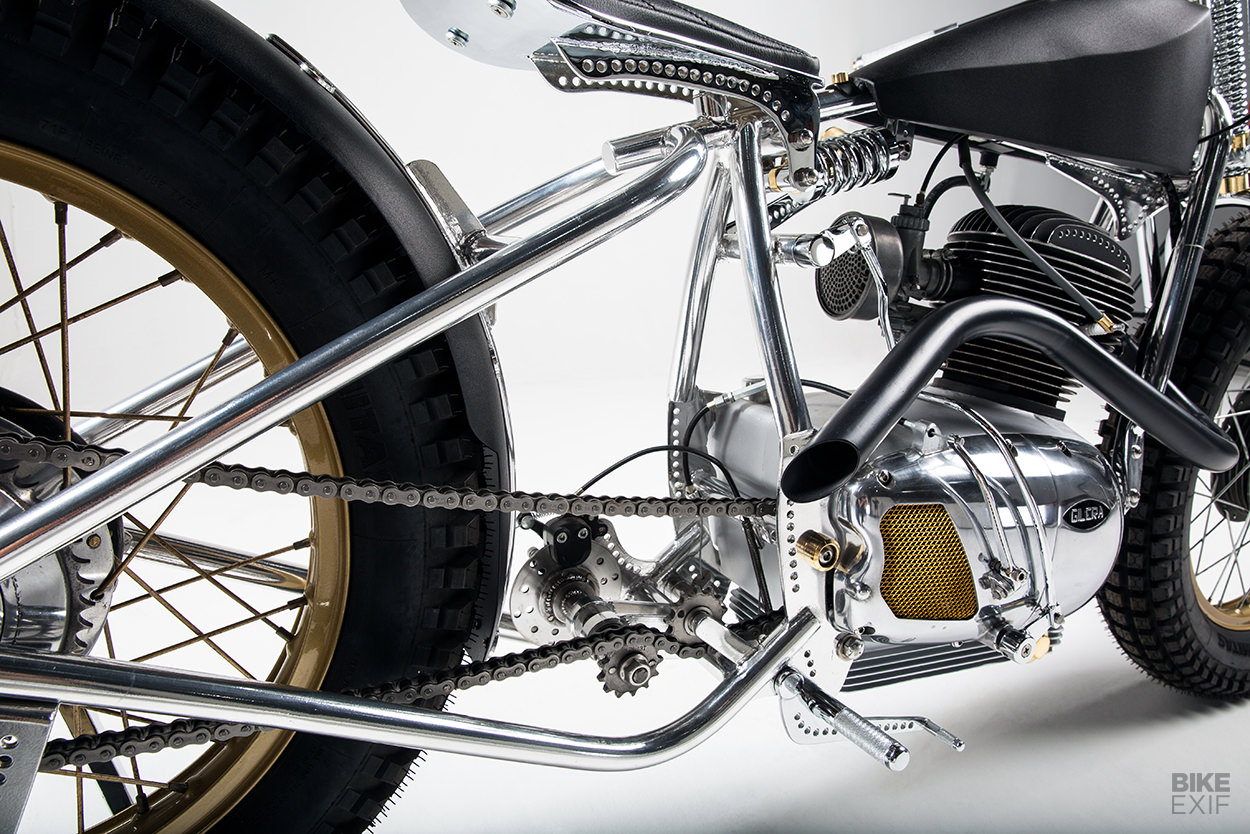
Less obvious parts resulted from hours of machining—including the axles, spacers, linkages and even the handgrips. Most of these parts have been chromed, but the frame has a polished ceramic powder coat.
The motor is a combination of the two engines Edi received, with the kickstarter removed: “To start it, you need a roller or a steep hill!”
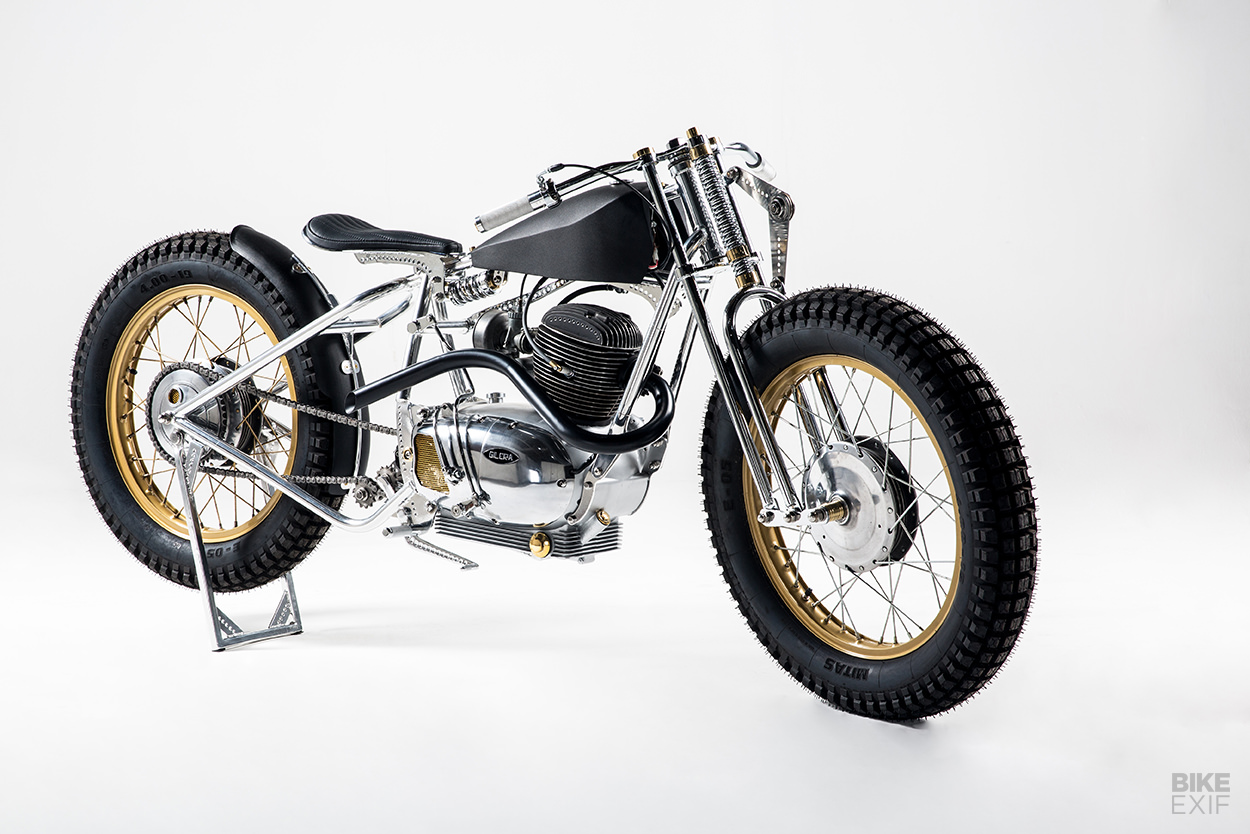
The effort would be worth it. Edi’s Gilera is a magnificent example of mechanical art, despite being built with limited time and resources. How does he do it?
“I bend some tube and see what happens,” he says.
Machine 1867 | Images by Ana Martini photography
